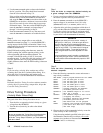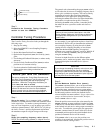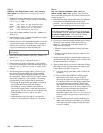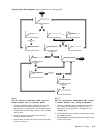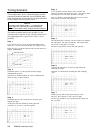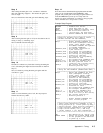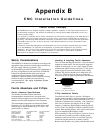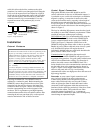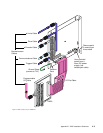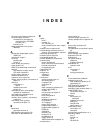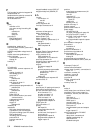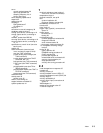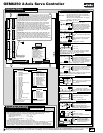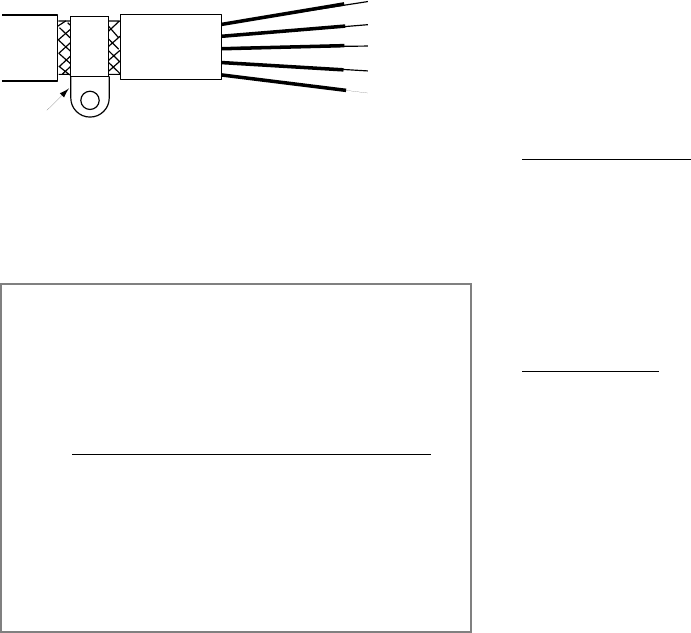
48
OEM6250 Installation Guide
cable (this allows the braid to continue to the cable
connector), be careful not to damage the braid. Snap the
P-clip over the exposed braid, and adjust for a tight fit.
Secure the clip to the designated ground with a machine
screw and lock washer. The use of brass or other inert
conductive metal P-clip is recommended. Cover any
exposed bare metal with petroleum jelly to resist
corrosion.
P-Clip
Remove outer jacket only
do not cut braid
Figure 2. P-Clip Installation
Installation
External Enclosure
Introduction
The measures described in this section are primarily for the
purpose of controlling conducted emissions. To control
radiated emissions, all drive and control systems must be
installed in a steel equipment cabinet which will give
adequate screening against radiated emissions. This
external enclosure is also required for safety reasons. There
must be no user access while the equipment is operating.
This is usually achieved by fitting an isolator switch to the
door assembly.
To achieve adequate screening of radiated emissions, all
panels of the enclosure must be bonded to a central earth
point. The enclosure may also contain other equipment and
the EMC requirements of these must be considered during
installation. Always ensure that drives and controllers are
mounted in such a way that there is adequate ventilation.
Preparing the OEM6250: The OEM6250 must be
mounted to a conductive panel. Before mounting the
OEM6250, remove the paint from the rear face of the
mounting hole that will be closest to the input filter
location as shown in Figure 3 below, and if necessary
from the corresponding area on the rear panel of the
enclosure. This is to guarantee a good high-frequency
connection between the drive case and the cabinet. After
mounting the unit use petroleum jelly on the exposed
metal to minimize the risk of future corrosion.
Control Signal Connections
High-quality braided screen cable should be used for
control connections. In the case of differential outputs, it
is preferable to use a cable with twisted pairs to minimize
magnetic coupling. A connection is made to the cable
screen at the controller end by exposing a short length of
the braided screen and anchoring this to earth using a
P-clip (see Figure 2). Fit a ferrite absorber close to the I/O
connector and run the cable down to the mounting panel as
shown in Figure 3.
The level at which the I/O operates means that the signals
are unlikely to meet EMC immunity requirements if taken
outside the enclosure without proper screening.
50-Pin Ribbon Cable: It is recommended when using the
50-Pin Ribbon Cable I/O found on the OEM6250 that
you use a terminal break-out box such as the VM50 or
VM24 (see Figure 3). Mount the VM50 close to the
OEM6250, keeping the ribbon cable as short as possible.
Bundle any excess ribbon cable and secure close to a panel
wall. Individual I/O points will require the use of
individually shielded cable runs, with braids bonded to the
panel (close to VM50) with a P-clip.
Communications: In applications that require serial
communications with the OEM6250, take special care to
use proper wiring practices. Use good quality braided screen
cable for the communication cabling. No connection is
made to the cable screen at the OEM6250 itself. Fit a
ferrite absorber close to the communications connector and
run the cable down to the mounting panel as shown in
Figure 3. Expose a short length of the braided screen and
anchor to the panel with a P-clip. Avoid routing
communication cables near high power lines and sources of
high energy impulses.
Remember to route control signal connections well
away (at least 8 inches) from relays and contactors.
Control wiring should not be laid parallel to power or
motor cables and should only cross the path of these
cables at right angles. Bear in mind that control cables
connected to other equipment within the enclosure may
interfere with the controller, particularly if they have come
from outside the cabinet. Take particular care when
connecting external equipment (e.g., a computer or
terminal) with the cabinet door open; static discharge may
cause damage to unprotected inputs.



